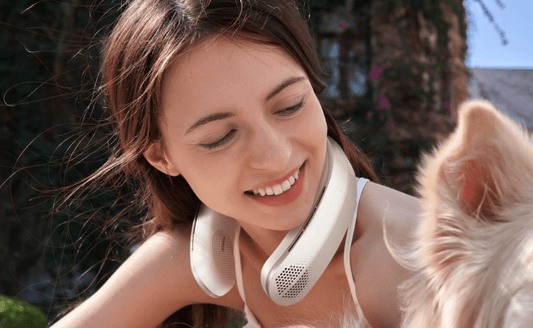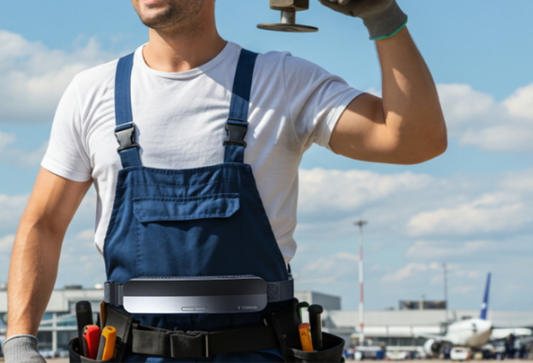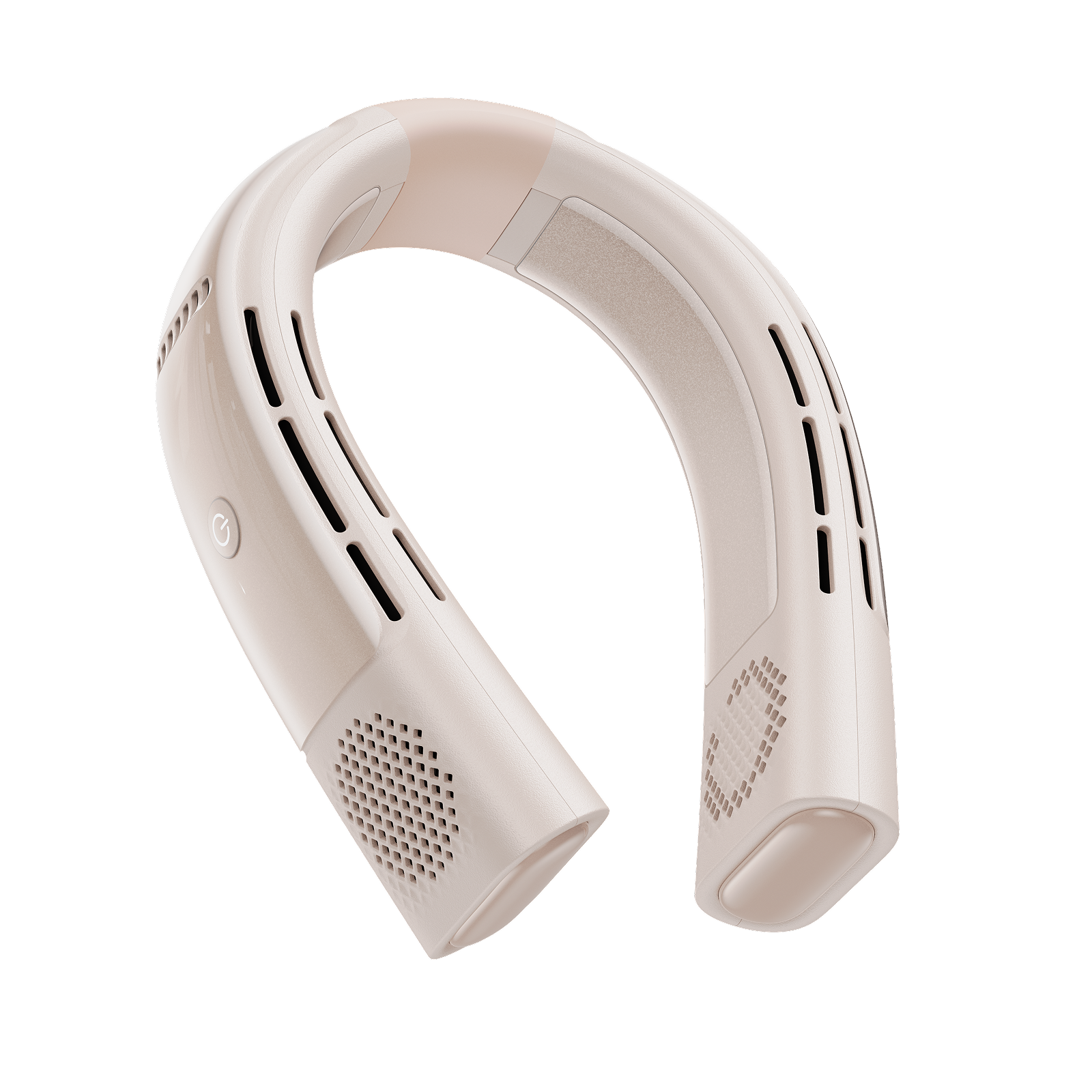Yes, some people may get air conditioning headaches. This condition, often referred to as an air conditioning headache, typically occurs when you spend long periods of time in cooled places. There can be different reasons for this issue, including Dry air, Cold temperature, Bad air quality, and even the sound of AC. If you often get headaches while inside the home and they stop once you go outside or shut off the air conditioner, your air conditioning system might be the reason.
How Air Conditioning Can Cause Headaches
Air conditioning changes indoor climate in multiple ways which could initiate headaches. Here are some of the biggest reasons for air conditioning headache:
1. Dry Air & Dehydration
Air conditioners remove moisture from the air, which can dry out your skin, throat, and sinuses. Dry sinuses are more prone to irritation and inflammation, often leading to headaches. Even mild dehydration caused by dry air can trigger discomfort.
2. Sudden Temperature Shifts
Going from a hot outdoor environment into a cold, air-conditioned space can shock the body. This abrupt change may cause blood vessels to constrict, a common headache trigger.
3. Poor Indoor Air Quality
Dirty AC units can circulate dust, mold, and allergens, irritating your respiratory system and increasing the likelihood of headaches, especially if you’re allergy-prone.
4. AC Noise & Vibration
Old or poorly maintained units often produce constant noise or vibrations. For those sensitive to sound, this can build up tension and contribute to headaches or migraines.

How to Prevent AC-Related Headaches Effectively?
There are a few ways to prevent an air conditioning headache while still staying cool:
· Stay Hydrated: Stay hydrated, especially in air-conditioned rooms. Although you are not thirsty, your body may lose moisture from dry air.
· Keep the Air Clean: Ensure your AC filters are clean. Replace or wash them every 1-2 months when using regularly. A clean system will prevent allergens and dust from accumulating.
· Use a Humidifier: If your AC makes the air too dry, you should use a humidifier.
· Avoid Extremely Cold Settings: Keep your thermostat comfortable, generally speaking set it between 24–26°C (75–78°F). At night, do not decrease the temperature too much.
· Ventilate the Room: Open windows if you can for fresh air. Even a few minutes a day will make a difference in indoor air quality.
· Reduce Noise: Get your air conditioning serviced if it making noise. A newer model also means less noise and less likely to trigger a headache from the sound.
Top Alternatives to AC That Won’t Hurt Your Head
If you suffer from regular air conditioning headache, or just want to cool off with something different, try these effective alternatives:
1. COOLiFY Cyber Neck Air Conditioner
If air conditioning gives you headaches, a smarter and more targeted solution is a wearable cooling device,and the TORRAS COOLiFY Cyber neck aircontioner stands out as the best option available.
Unlike traditional AC units that blast the whole room, the COOLiFY Cyber provides direct neck and shoulder cooling for immediate relief. It’s designed with the industry’s largest 14,975 mm² cooling surface, using 3 TEC cooling modules, graphene heat conduction, and cooling particles to deliver instant chill and maximum comfort.
It also supports heat therapy, making it a powerful tool to ease headaches caused by cold air or sinus tension.
This lightweight, portable device offers 360° cooling through 6 upper and 2 lower vents, powered by 4 aerodynamic motors.
With three modes, Fan, Cooling, and Heat Therapy, the COOLiFY Cyber is your all-season personal climate solution.
Why COOLiFY Cyber Stands Out:
l 14,975 mm² industry-leading cooling surface
l 3 TEC cooling modules + graphene heat transfer
l 360° airflow with 8 vents and 4 motors
l Smart app for temperature adjustment
l Use while charging
l 3 Modes: Cooling / Fan / Heat Therapy
2. Cooling Neck Fans
Neck Cooling fans are also a good option. TORRAS COOLiTE neck fan provides 360° air flow, multiple speed settings, and is equipped with a quiet motor. It is also foldable and lightweight, you can wear it around the house, at work, or during commute. It provides an intelligent, energy-efficient alternative to a traditional air conditioner, without drying out your air or blaring noise.
3.Natural Ventilation + Window Shades
Sometimes old ways are often best. In the early morning or late evening, open windows when the air is cooler. By blocking sunlight, window shades or blackout curtains help cool your room naturally and work best when the sun is its hottest. The prevention of headaches isn’t the only reason this method is beneficial, it also conserves energy.
4. Evaporative Coolers or Air Circulators
If you’re in a dry area, evaporative coolers (or swamp coolers) can work. They operate by humidifying the air as they cool, so they are less inclined to dry out sinuses. Air circulators, such as oscillating or tower fans, can keep air moving without cooling it too aggressively. Either approach can help avoid air conditioning headaches.
Relate Reading: The Best Neck Coolers You Need in 2025

When Air Conditioning Headaches Require Medical Attention
The majority of air conditioning headaches dissipate shortly after rehydrating or changing your environment. But sometimes you need to see a doctor:
· A headache that doesn't go away for over 24 hours or comes back.
· If you have fever, neck stiffness, or confusion as well.
· If it is an extremely excruciating headache or it appear suddenly.
· If you feel dizzy, nauseous, or sensitive to light.
These may be symptoms of something more severe, such as migraines or a sinus infection. Consult with a doctor if your symptoms are not better when you step out of the AC for a while, adjust the settings of the AC, or drink plenty of fluids.
FAQs
Q1: Can air conditioning trigger migraines?
A: Yes, particularly if it leads to dehydration, cold stress and allergens. Anyone susceptible to migraines should pay attention to how AC affects them.
Q2: How often should AC filters be changed?
A: Recommended every 1 to 3 months for most homes. During allergy season or in homes with pets, you may need to replace it more often.
Q3: Is it better to sleep with the AC on or off?
A: It depends on comfort. If you sleep with AC on, keep it moderate, and the AC should not blow directly to you cold air.
Q4: Are wearable cooling devices safe for long-term use?
A: Yes, the vast majority of wearable devices such as the TORRAS COOLiFY have been built for everyday wear. As long as you use is under guidelines and charge the device correctly.
Q5: Does using a humidifier with AC help?
A: Absolutely. It also balances the levels of humidity and avoids the indoor air from getting too dry which can be the biggest cause of headaches
Conclusion
Now, I believe you’ve found the answer to “Can air conditioning cause headaches?” Actually, a headache due to AC may seem a minor issue at the beginning, but it can significantly hamper your comfort and concentration. Fortunately, these headaches mostly stem from something avoidable with a few wise adjustments, hydration, clean system, and extreme temperature shifts. Consider using the other option such as wearable coolers/fans as needed. However, if the pain comes back regularly or is severe, consult your doctor. Remaining cool must not be at the expense of your overall health.






